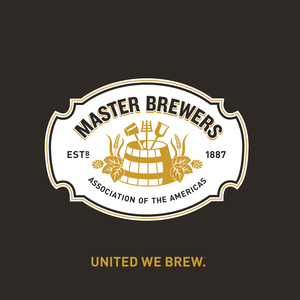Master Brewers Podcast
Episode Archive
Episode Archive
329 episodes of Master Brewers Podcast since the first episode, which aired on August 14th, 2017.
-
Episode 083: The Red Queen Hypothesis
November 8th, 2021 | 42 mins 29 secs
The disease has moved out of Africa, it's now in the Middle East. It's only a matter of time before it arrives. It's a numbers game. Pat Hayes joins us to talk about barley breeding, the race against disease, genetic tools, and more.
-
Episode 228: The Challenging 2021 Barley Outlook
October 25th, 2021 | 54 mins 50 secs
Are you prepared to face the most challenging barley crop most of us have ever seen?
-
Episode 227: IRC7 + CRISPR = Cosmic Punch
October 18th, 2021 | 54 mins 41 secs
"Thiolized" CRISPR yeast, the world's 1st convincing argument for mash hopping, and more.
-
Episode 063: Utilizing Predictive Analytics to Improve Quality & Maximize Capacity at Deschutes Brewery
October 11th, 2021 | 32 mins 13 secs
Brian Faivre explains how one of the largest craft brewers is using data and tools (accessible to breweries of any size) to improve their process.
-
Episode 061: Glycol Systems for Breweries
September 13th, 2021 | 38 mins 26 secs
Dan Stromberg discusses industry best practices for glycol system piping. You'll learn how to balance your system, how to size headers for correct flow rates & velocity, which pipe materials to consider, why the ubiquitous solenoid valve is a bad choice, and more.
-
Episode 223: Brewing with Honey
September 6th, 2021 | 37 mins 58 secs
Tips & inspiration for using honey in your beer.
-
Episode 080: Brewing Hoppy Beers - Targeting Flavor, Not Varietal
August 16th, 2021 | 36 mins 18 secs
Ben Edmunds describes his unique & effective approach to brewing hoppy beer.
-
Episode 219: Repitching Cal Ale
August 2nd, 2021 | 33 mins 38 secs
A study examining the impacts of wort gravity, IBUs, and serial repitching of California Ale yeast.
-
Episode 059: Process Control Through Enzyme Understanding
June 21st, 2021 | 37 mins 47 secs
Important tools every brewer should have within reach, as we all struggle to deal with increasing competition, costs, variability in raw materials, and strive to operate more sustainable breweries.
-
Episode 213: Magnesium-accelerated Maillard reactions
June 7th, 2021 | 37 mins 47 secs
We take a deep dive into the impact Mg can have on the Maillard reactions occurring in the brewhouse and during malting.
-
Episode 212: Yeast Nutrient: Hard Seltzer vs Wort
May 31st, 2021 | 55 mins 15 secs
What does a brewer who is new to brewing hard seltzer need to know about yeast & fermentation? And more importantly, what the heck is actually in yeast nutrient? Which type of nutrient do you need and how much should you be using?
-
Episode 067: In the Blink of an Eye
May 24th, 2021 | 37 mins 39 secs
When Keith Miller got blasted in the face with caustic, he was blinded instantly. This could happen to any brewer. Imagine yourself crawling on the brewery floor, completely blind, in desperate search of a safety shower. What happens in the seconds immediately following an injury like this determines whether or not you'll be blind for the rest of your life. Understanding the risks and being fully prepared for an accident like this greatly increases the odds of regaining your eyesight.
-
Episode 211: The Sweet Spot
May 17th, 2021 | 46 mins 21 secs
Dextrose, cane sugar, beet sugar, corn syrups, back sweetening with stevia, and more
-
Episode 065: Troubleshooting Off-flavors
April 26th, 2021 | 27 mins 24 secs
4 real-life off-flavor scenarios from Highland Brewing Company, how each issue was discovered & remedied, and the role that sensory data played in each case.
-
Episode 208: Understanding Thiol Precursor in Hops & Malt
April 19th, 2021 | 47 mins 8 secs
We catch up with a guy who's been studying thiols since before most of us understood why they matter. If you're chasing tropical flavors in beer, this episode is a must listen.
-
Episode 206: Practical Sustainability
April 5th, 2021 | 43 mins 37 secs
We take a look at the carbon footprint of barley and hear about how a maltster's procurement contracts have drastically reduced that carbon footprint at no cost to farmers. We'll also hear about some case studies from the malthouse, as well as how & why every brewery should take a practical approach to sustainability.
